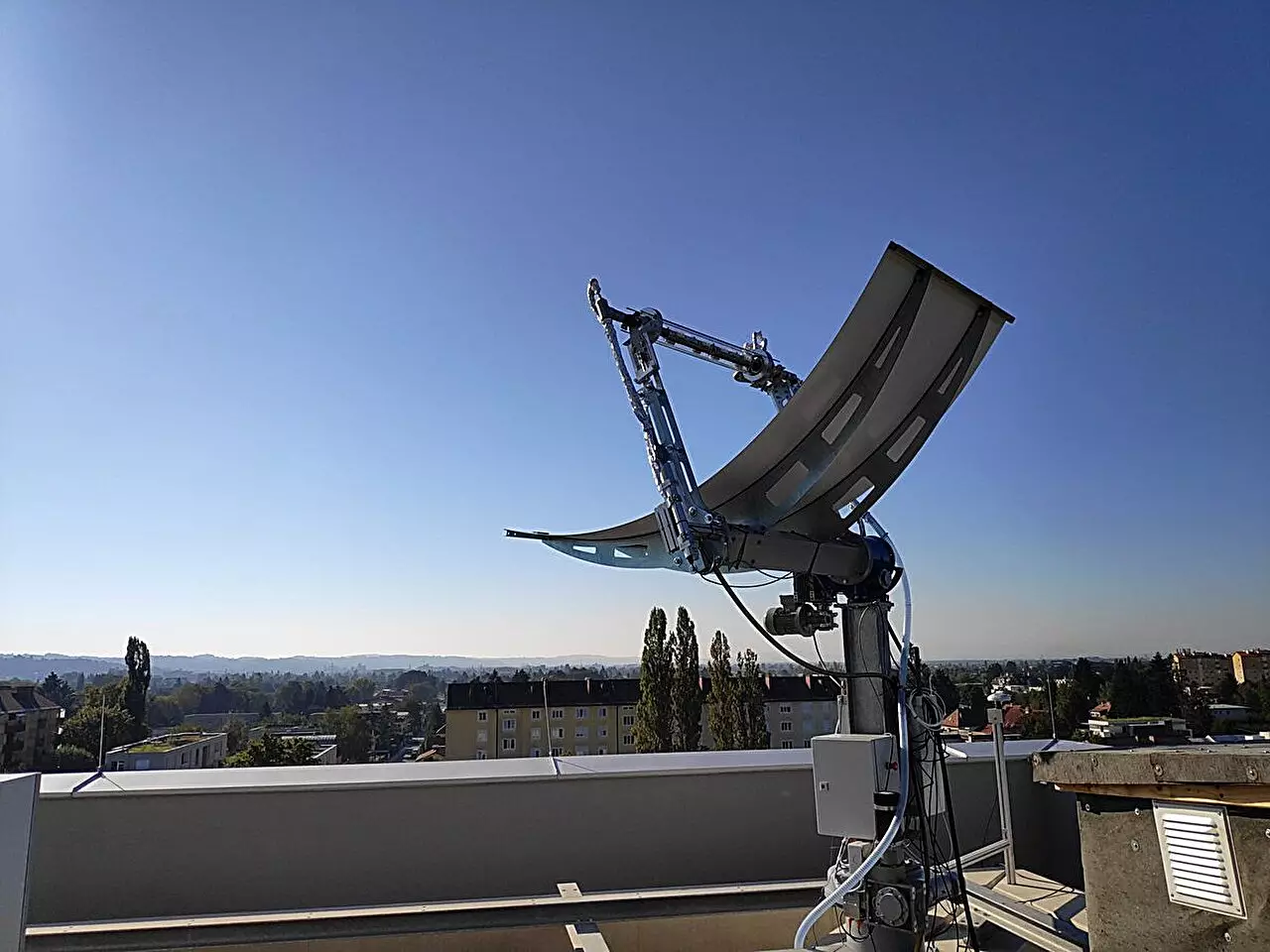The development of concentrator photovoltaic cells that harness both electricity and thermal energy from solar rays using parabolic mirrors represents a significant breakthrough in renewable energy technology. Led by Armin Buchroithner from Graz University of Technology, an international team has successfully created a cost-effective parabolic trough collector that maximizes the efficiency of solar power generation.
One of the key advancements in this project is the utilization of inexpensive photovoltaic cells combined with a trough-shaped concave mirror to concentrate solar rays onto the cells. The waste heat produced by the cells is then extracted and converted into thermal energy through a specialized heat transfer fluid system. This dual-generation system has the potential to revolutionize the way we produce electricity and heat using solar energy.
The integration of electricity and thermal energy generation from solar radiation opens up a wide range of possibilities for various industries and applications. From climate-neutral heating and cooling of buildings to industrial processes in sectors like food and textiles, the benefits of this technology are far-reaching. The research team’s goal of contributing to the energy transition is commendable, as it addresses the pressing need for sustainable and environmentally friendly energy sources.
Read More: The Design and Discovery of New Materials: A Breakthrough in Solid-State Electrolyte Technology
While the concept of dual-energy generation from solar radiation is not new, previous attempts have been hampered by high costs and technological limitations. However, with the implementation of innovative solutions developed by Buchroithner and his team, the scalability and affordability of this technology have greatly improved. By optimizing the manufacturing process and enhancing the performance of silicon solar cells, the researchers have paved the way for widespread adoption of concentrator photovoltaics.
Traditionally, parabolic trough solar power plants have been limited to regions with abundant sunlight, such as Spain or the Persian Gulf. However, the successful test results of this new technology suggest that it can be effectively utilized in less sunny regions like Austria. By replacing fossil fuels in industrial processes with clean solar energy, the environmental and economic benefits of this innovation can be realized on a global scale.
The development of concentrator photovoltaic cells with integrated thermal energy production marks a significant milestone in the field of solar energy technology. With the potential to drive sustainable energy practices across various industries and regions, this innovative approach has the power to shape the future of renewable energy production.


Leave a Reply